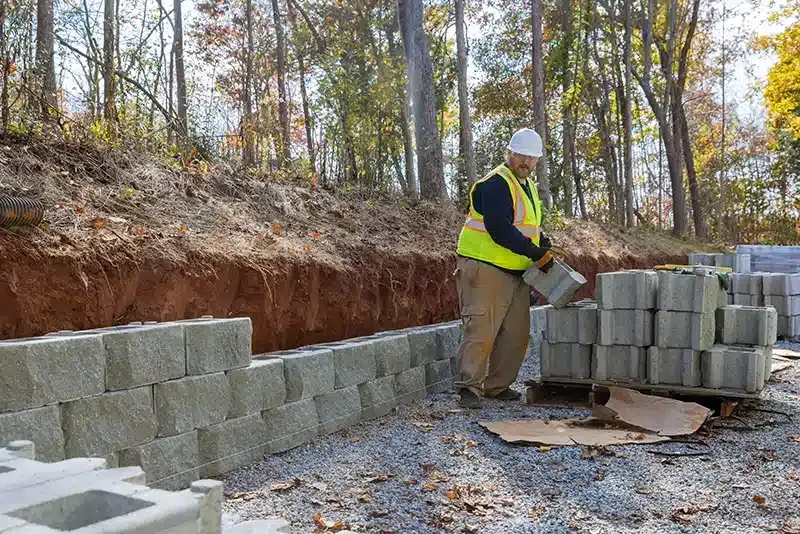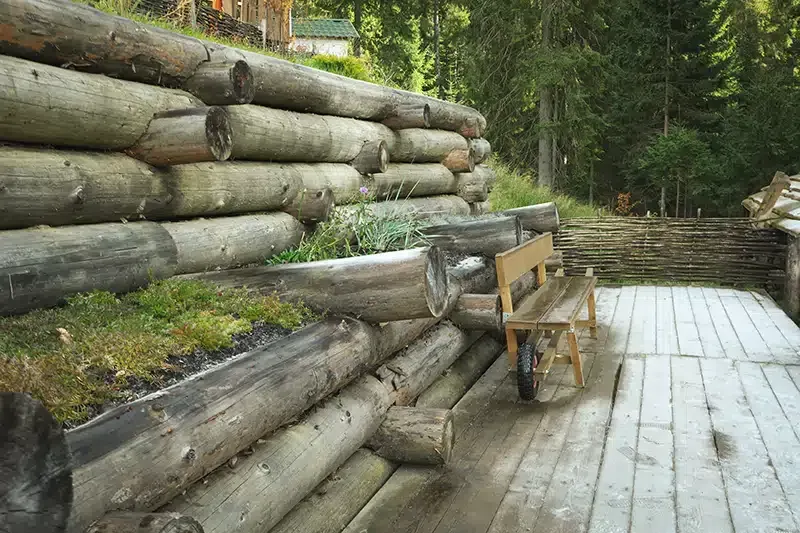When should you repair a concrete retaining wall?
When Should You Repair a Concrete Retaining Wall?

Concrete retaining walls are built to last, providing structural support, soil retention, and landscape organization for residential and commercial properties. But over time, even well-built walls can show signs of wear and damage.
Ignoring early issues can lead to more extensive and costly problems down the road. Knowing when to repair your concrete retaining wall is essential for maintaining its safety, function, and appearance.
Whether caused by weather, age, or improper drainage, visible damage is often a warning sign that should not be overlooked.
Cracks and Surface Damage
Cracks in a concrete retaining wall may seem minor, but they can quickly worsen if left unaddressed.
- Repair hairline cracks early: Small surface cracks are often caused by shrinkage or minor shifting and can typically be sealed with concrete filler.
- Monitor larger cracks for movement: Cracks wider than 1/8 inch or that grow over time may indicate structural stress and require professional evaluation.
- Check for horizontal or stair-step cracks: These patterns often signal pressure from behind the wall and could mean the wall is beginning to fail.
Leaning or Bulging Walls
When a retaining wall starts to lean or bulge, it’s a sign of structural strain that should be addressed immediately.
- Inspect the direction and severity of movement: Forward-leaning or bowing indicates the wall is struggling to support the soil load, often due to poor drainage or foundation issues.
- Avoid DIY fixes for structural leaning: A leaning wall often requires reinforcement or partial reconstruction to ensure safety and stability.
- Call a structural engineer for severe displacement: Professional guidance is critical when the wall's movement becomes noticeable or endangers nearby structures.
Drainage and Water Damage
Poor drainage is one of the leading causes of retaining wall failure and often shows up as water-related damage.
- Look for signs of water pooling or staining: These indicate that the wall may not be draining properly, which can lead to increased pressure and cracking.
- Check for clogged or missing drainage pipes: A lack of weep holes or blocked drains can cause hydrostatic pressure to build behind the wall.
- Repair drainage systems before patching wall cracks: Addressing water issues first prevents future deterioration and ensures a longer-lasting repair.
Erosion and Soil Movement
If the soil around your retaining wall is shifting, settling, or washing away, repairs may be necessary to maintain wall integrity.
- Reinforce soil behind the wall with backfill: Properly compacted gravel and soil reduce pressure and support the wall's structure.
- Address gaps between the wall and the soil: Open spaces may indicate erosion or settling and can lead to further wall displacement.
- Install landscape fabric or geogrid if needed: These materials help stabilize the soil and reduce erosion around the wall.
Aging and General Wear
Even if a concrete retaining wall shows no dramatic damage, age and exposure can still impact performance.
- Inspect regularly for surface wear and weathering: Over time, exposure to sun, rain, and freezing temperatures can weaken concrete.
- Patch spalling or surface flaking: Small areas of crumbling concrete can often be repaired with resurfacing products to restore appearance and strength.
- Consider reinforcement or retrofitting for older walls: Older walls that weren’t built to today’s standards may benefit from added supports or drainage upgrades.
Timely repairs to a concrete retaining wall can extend its life, protect surrounding property, and prevent expensive structural failures. From minor cracks to major leaning, recognizing early warning signs and acting promptly is the key to maintaining safety and function.
Regular inspections and professional input—especially for load-bearing or large commercial retaining walls—help ensure that your retaining wall remains a solid part of your landscape for years to come.


